
Pac-Man, originally called Puck Man in Japan, is a 1980 maze action video game developed and released by Namco for arcades. In North America, the game was released by Midway Manufacturing as part of its licensing agreement with Namco America. The player controls Pac-Man, who must eat all the dots inside an enclosed maze while avoiding four colored ghosts. Eating large flashing dots called "Power Pellets" causes the ghosts to temporarily turn blue, allowing Pac-Man to eat them for bonus points.
An action game is a video game genre that emphasizes physical challenges, including hand–eye coordination and reaction time. The genre includes a large variety of sub-genres, such as fighting games, beat 'em ups, shooter games, rhythm games and platform games. Multiplayer online battle arena and some real-time strategy games are also considered action games.
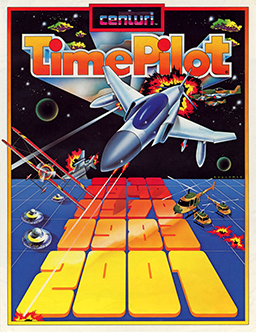
Time Pilot is a multidirectional shooter arcade video game designed by Yoshiki Okamoto and released by Konami in 1982. It was distributed in the United States by Centuri, and by Atari Ireland in Europe and the Middle East. While engaging in aerial combat, the player-controlled jet flies across open airspace that scrolls indefinitely in all directions. Each level is themed to a different time period. Home ports for the Atari 2600, MSX, and ColecoVision were released in 1983.
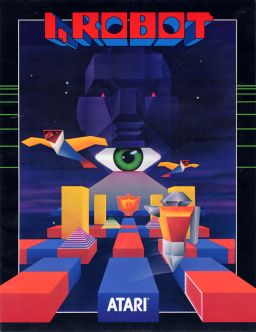
I, Robot is an arcade shooter game developed and released in 1984 by Atari, Inc. Designed by Dave Theurer, only a total of 750–1000 arcade cabinets were produced. The arcade machine comes with two games. The first is I, Robot, a multi-directional shooter that has the player assume the role of "Unhappy Interface Robot #1984", a servant bot that rebels against Big Brother. The object of the game involves the servant bot going through 126 levels, turning red squares to blue to destroy Big Brother's shield and eye. The player can switch to the second game, Doodle City, a drawing tool that lasts for three minutes.
Fueled by the previous year's release of the colorful and appealing Pac-Man, the audience for arcade video games in 1981 became much wider. Pac-Man influenced maze games began appearing in arcades and on home systems. Pac-Man was the highest grossing video game for the second year in a row. Nintendo's Donkey Kong defined the platform game genre, while Konami's Scramble established scrolling shooters. The lesser known Jump Bug combined the two concepts into both the first scrolling platform game and the first platform shooter. Other arcade hits released in 1981 include Defender, Frogger, and the Galaxian sequel Galaga.
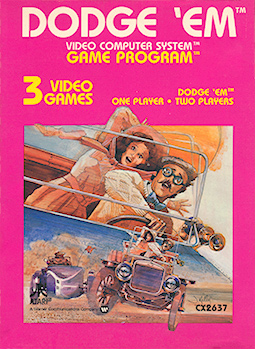
Dodge 'Em is a driving-themed maze game programmed by Carla Meninsky and published in 1980 by Atari, Inc. for the Atari VCS. Similar to Sega's 1979 Head On arcade game, Dodge 'Em is played on a single screen of four concentric roadways. Sears released the game for the "Sears Video Arcade" as Dodger Cars.
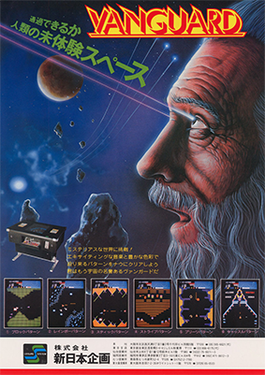
Vanguard is a scrolling shooter arcade video game developed by TOSE. It was released by SNK in Japan and Europe 1981, and licensed to Centuri for manufacture in North America in October and to Zaccaria in Italy the same year. Cinematronics converted the game to cocktail arcade cabinets in North America.

Warp & Warp is a multidirectional shooter arcade video game developed and published by Namco in 1981. It was released by Rock-Ola in North America as Warp Warp. The game was ported to the Sord M5 and MSX. A sequel, Warpman, was released in 1985 for the Family Computer with additional enemy types, power-ups, and improved graphics and sound.

Nibbler is an arcade snake maze game released in 1982 by Chicago-based developer Rock-Ola. The player navigates a snake through an enclosed maze, consuming objects, and the length of the snake increases with each object consumed. The game was the first to include nine scoring digits, allowing players to surpass one billion points.
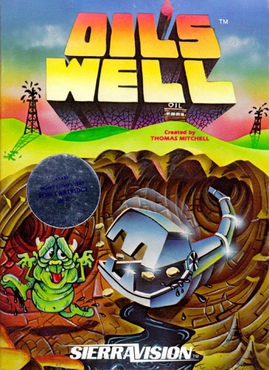
Oil's Well is a video game published by Sierra On-Line in 1983. The game was written for the Atari 8-bit family by Thomas J. Mitchell. Oil's Well is similar to the 1982 arcade game Anteater, re-themed to be about drilling for oil instead of a hungry insectivore. Ports were released in 1983 for the Apple II and Commodore 64, in 1984 for ColecoVision and the IBM PC, then in 1985 for MSX and the Sharp X1. A version with improved visuals and without Mitchell's involvement was released for MS-DOS in 1990.

Pac-Man: Adventures in Time is a 2000 maze video game in the Pac-Man series developed by Creative Asylum and Mind's Eye Productions, and published by Hasbro Interactive, in collaboration with Namco. The game follows a formula similar to the original arcade game, while expanding on it with new features. In the game, Pac-Man travels through various time periods using Professor Pac-Man's time machine to recover pieces of an ancient artifact.

Xybots is a 1987 third-person shooter arcade game by Atari Games. In Xybots, up to two players control "Major Rock Hardy" and "Captain Ace Gunn", who must travel through a 3D maze and fight against a series of robots known as the Xybots whose mission is to destroy all mankind. The game features a split screen display showing the gameplay on the bottom half of the screen and information on player status and the current level on the top half. Designed by Ed Logg, it was originally conceived as a sequel to his previous title, Gauntlet. The game was well received, with reviewers lauding the game's various features, particularly the cooperative multiplayer aspect. Despite this, it was met with limited financial success, which has been attributed to its unique control scheme that involves rotating the joystick to turn the player character.

Tutankham is a 1982 arcade video game developed and released by Konami and released by Stern in North America. Named after the Egyptian pharaoh Tutankhamun, the game combines a maze shoot 'em up with light puzzle-solving elements. It debuted at the European ATE and IMA amusement shows in January 1982, before releasing worldwide in Summer 1982. The game was a critical and commercial success and was ported to home systems by Parker Brothers.

In video games, first-person is any graphical perspective rendered from the viewpoint of the player character, or from the inside of a device or vehicle controlled by the player character. It is one of two perspectives used in the vast majority of video games, with the other being third-person, the graphical perspective from outside of any character ; some games such as interactive fiction do not belong to either format.

Fantasy is an action game developed by SNK and released for arcades in October 1981. It was licensed to Rock-Ola for North American release in February 1982. The game is controlled with a single joystick. One level plays the melody from the song "Funkytown". According to the book Gamers: Writers, Artists & Programmers on the Pleasures of Pixels, this is the first arcade video game to have a continue feature.

Head On is an arcade video game developed by Sega/Gremlin and released by Sega in 1979. It's the first maze game where the goal is to run over dots. Designed by Lane Hauck at Sega/Gremlin in the United States, it was the fourth highest-grossing arcade game of 1979 in both Japan and the US.

Gun Buster, also known as Gunbuster (ガンバスター) and released in North America as Operation Gunbuster, is a first-person shooter video game developed by Taito and released for arcades in 1992. In contrast to on-rail light gun shooters at the time, this was one of the first arcade games to feature free-roaming FPS gameplay, the same year Wolfenstein 3D was released on personal computers.

Zaccaria, was an Italian company of pinball and arcade machines that existed in Bologna from 1974 until 1990. The factory was sold to tecnoplay.
















